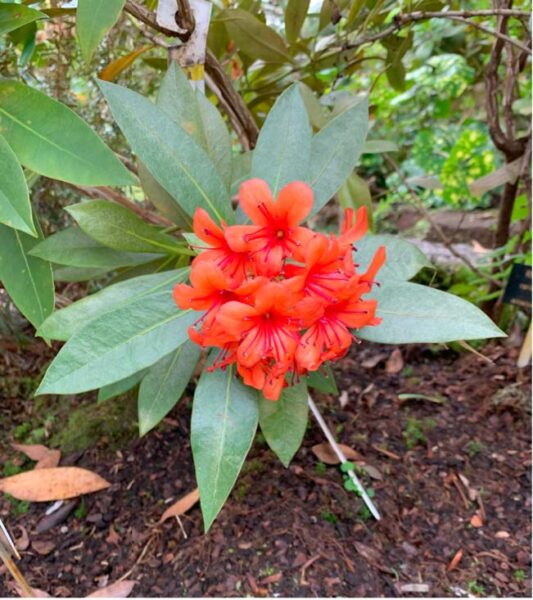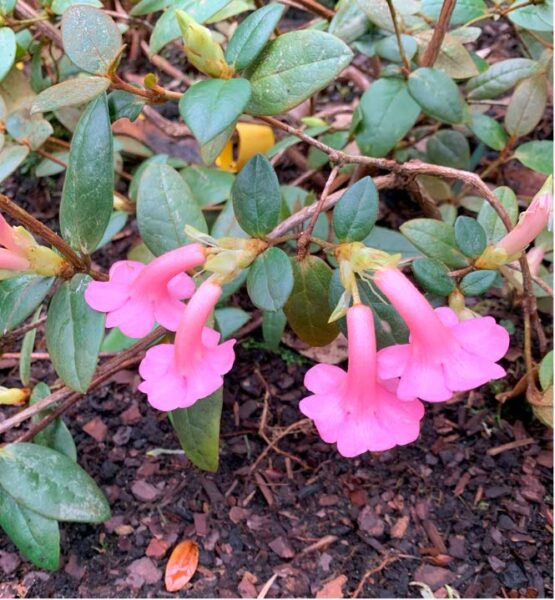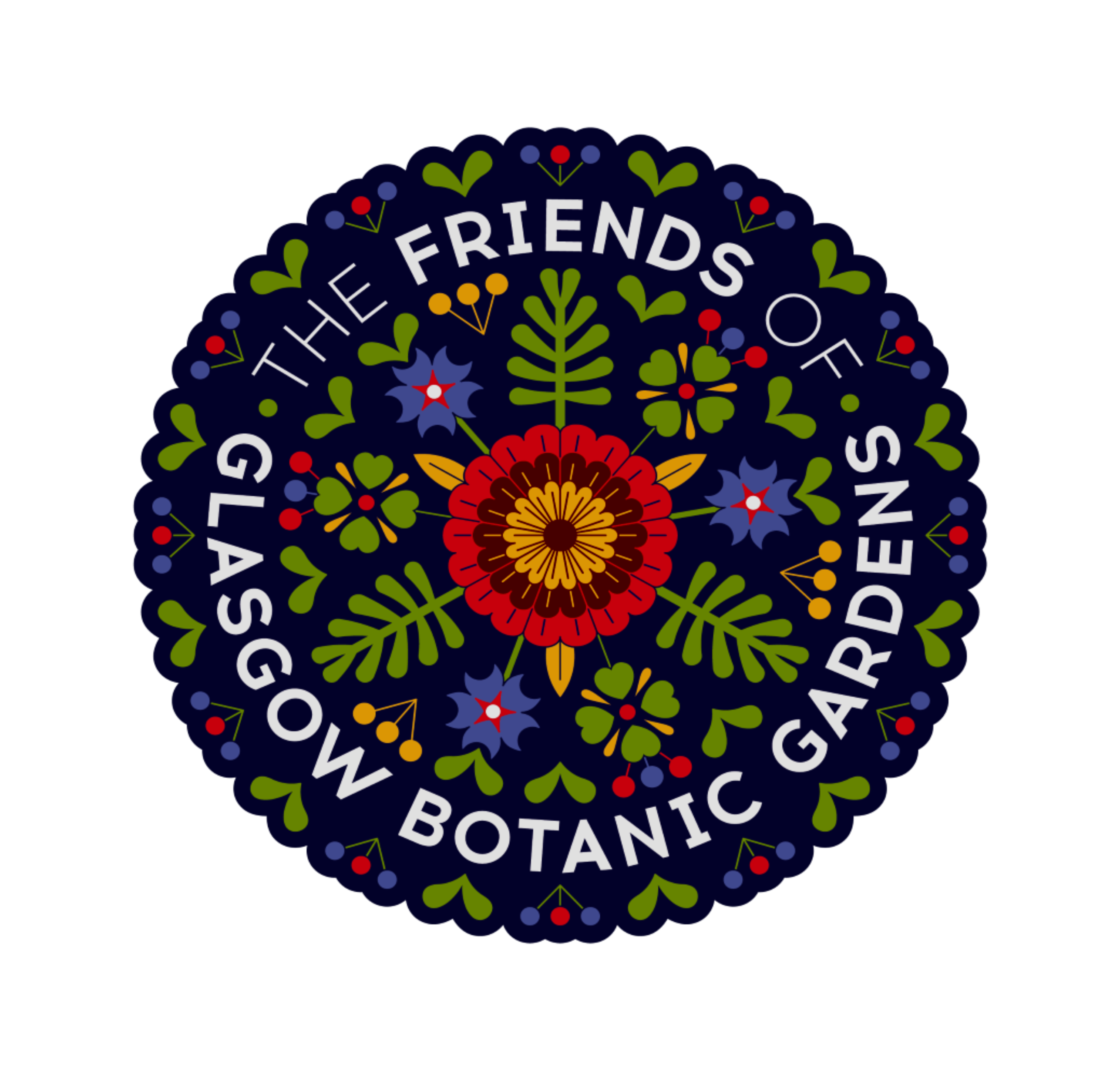By Rob Wishart, Garden Guide
This time of year, there will be quite a few rhododendrons flowering in the
Gardens and elsewhere. Perhaps like me, you are hoping to get to visit some of the wonderful gardens in Scotland where they grow so well. These are usually Himalayan and Chinese species and hybrids – huge numbers of which were introduced in the late 19th and early 20th century. But there is a whole group which need to be grown indoors in Britain and are less well known. These are the Vireya rhododendrons.
Glasgow Botanic Gardens has an excellent collection of these plants – some in the north side of the Kibble Palace main dome and some in a well labelled display at the eastern end of the Main Glasshouse range.
The Vireyas became popular in the mid-19th century when many of the most spectacular frost hardy species and hybrids were yet to be introduced. Developments in glass making and the abolition of tax on glass had made conservatories very popular – they became almost an essential addition to the mansions and villas of the well-to-do such as John Kibble. So, there was a great deal of interest in the Vireya group. They made excellent plants for conservatories, they have beautiful flowers in many shades of red, pink, orange, yellow and white– in fact none contain any blue pigments, so you never get purple or lilac flowers. And added to that some, especially the whites, are deliciously scented.

This is R rarilepidotum from Sumatra where
it grows at altitudes of 1000-2500m – it has
beautiful orange (or yellow) funnel shaped
flowers
The 300 or so species mostly come from the Malesian archipelago – Malaysia, Indonesia, Philippines and Papua-New Guinea. They grow in cloud forests or sub-alpine scrub – some of them up to an altitude of 3660 metres.
William Jack, an East India Company surgeon from Aberdeen collected the first one, R malayanum in Sumatra in 1822. They are particularly associated with the firm of James Veitch & Sons – nurserymen in Exeter and later Chelsea, who were unusual in employing their own collectors. One of them, Thomas Lobb, brought back the first live Vireyas in 1845. One species, R javanicum, was a real showstopper – it had bright orange flowers which were then quite a rarity. These first introductions were followed by many more species and by 1900
James Veitch had introduced over “several hundred” hybrids. Not all were continued – and new hybrids always cost a lot more than older ones. In 1882, the latest, Duchess of Connaught, would cost you 21 shillings (£70 now).
By the early 20th century though, things were changing. New hardy species were being brought back from China and Nepal and many new hybrids introduced. Then in World War 1 the cost of labour and heating meant that many conservatories were abandoned – and with that these lovely plants fell out of favour.
Pictured here is R leptanthum from Papua New Guinea. It is hemiepiphytic meaning it starts life on trees but eventually roots in the ground.

More recently interest has grown again, especially in America and other places where they can be grown outdoors. The Royal Botanic Gardens in Edinburgh holds the UK National Collection and is a centre for their study.
